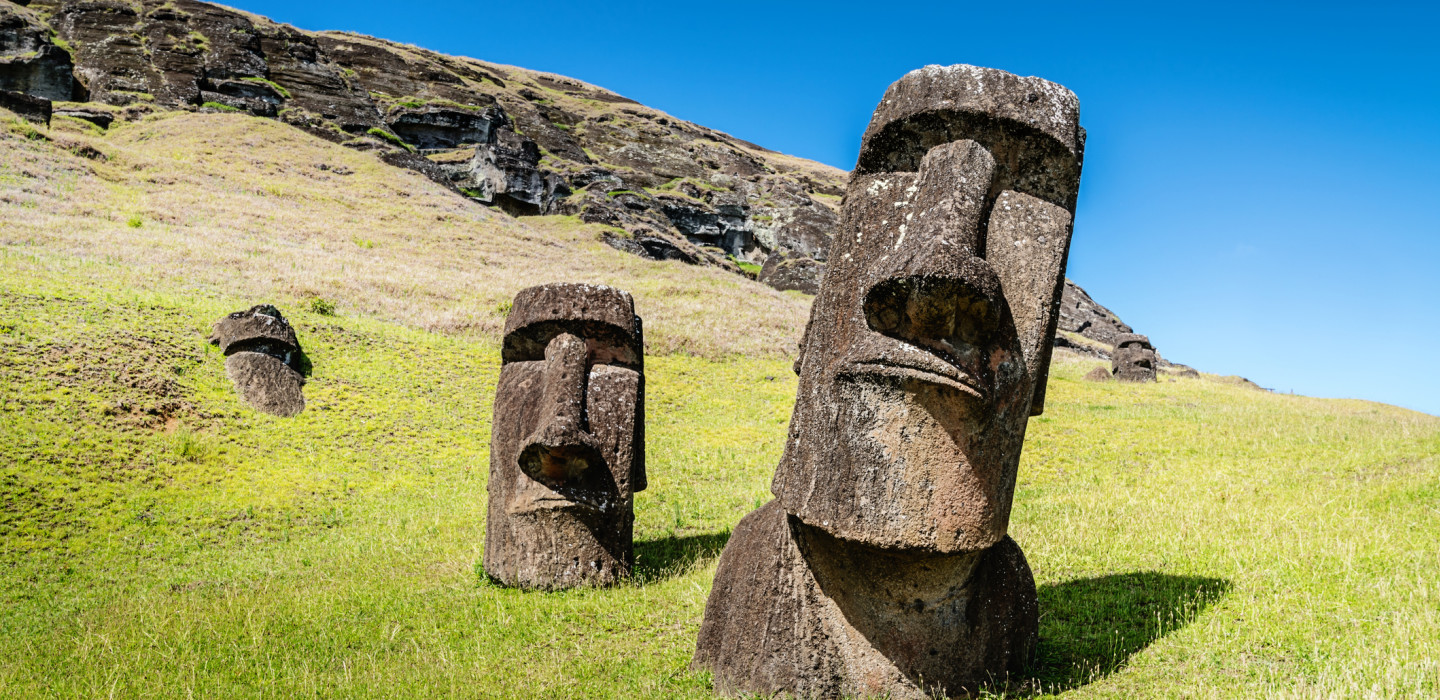
Spotlight on Easter Island
As isolated as any inhabited place in the world, Easter Island sits alone in the middle of the Pacific Ocean.

More than 2,000 miles from the continent of South America, Easter Island’s nearest inhabited neighbor is Pitcairn Island, home of the descendants of the HMS Bounty mutineers.
When the first Polynesians arrived by raft nearly 1,500 years ago, Easter Island was covered with giant palm forests. The society prospered and by the end of the first millennium, they began constructing the huge stone statues for which the island is now famous. Historians believe that these monoliths called moai—some weighing nearly 80 tons and standing more than 30 feet tall—were sculpted to honor the ancestors of the Rapu Nui native people.
Over the centuries visitors have marveled at the enormity of the moai, visited the hillside quarry from which they were made out of porous volcanic tuff and wondered how these ancient people, using no more than rope and wood, moved them across miles to the ceremonial centers where they stood as symbols of a lost civilization.
Some scientists and historians believe that the Rapa Nui moved their moai by cutting down palm trees and using ropes to pull the supine statues over the felled logs. It would have been a laborious, tree-intensive process that could have contributed to the deforestation of the island, which brought hardship and privation to the native people. This is the view of cultural implosion put forward in Jared Diamond’s popular book Collapse.
However, a 2012 National Geographic story discusses a competing hypothesis that the statues were instead transported vertically and moved forward much like one would rock a refrigerator into place. In this scenario, three groups of people would attach ropes to the enormous moai, one group on either side to rock the statue back and forth, and one group at the back to keep it upright. The idea of the statues “walking” fits in with the local legends.
Transporting the moai in this way might also explain the many broken statues that have been found beside well-traveled paths throughout the island. In this theory, advanced by Terry Hunt and Carl Lipo in their book The Statues That Walked, the native people would not have caused their own demise by cutting down palm forests to move their moai. Instead, the authors believe that invasive Polynesian rats that ate the seeds of the palm trees were largely responsible for the destruction of the forests and the island’s ecological collapse.
In the end, these theories are just that—theories. We still don’t know much for certain about the ancient civilization of Easter Island. But as you examine the half-finished moai in the Rano Raraku quarry, look up at the grand altar at Ahu Tongariki, or gaze out at the seemingly endless blue sea from the top of the ceremonial village of Orongo, you might just feel that it’s actually nice to have a few mysteries left in the world.
Easter Island is featured on our Around the World expeditions.





